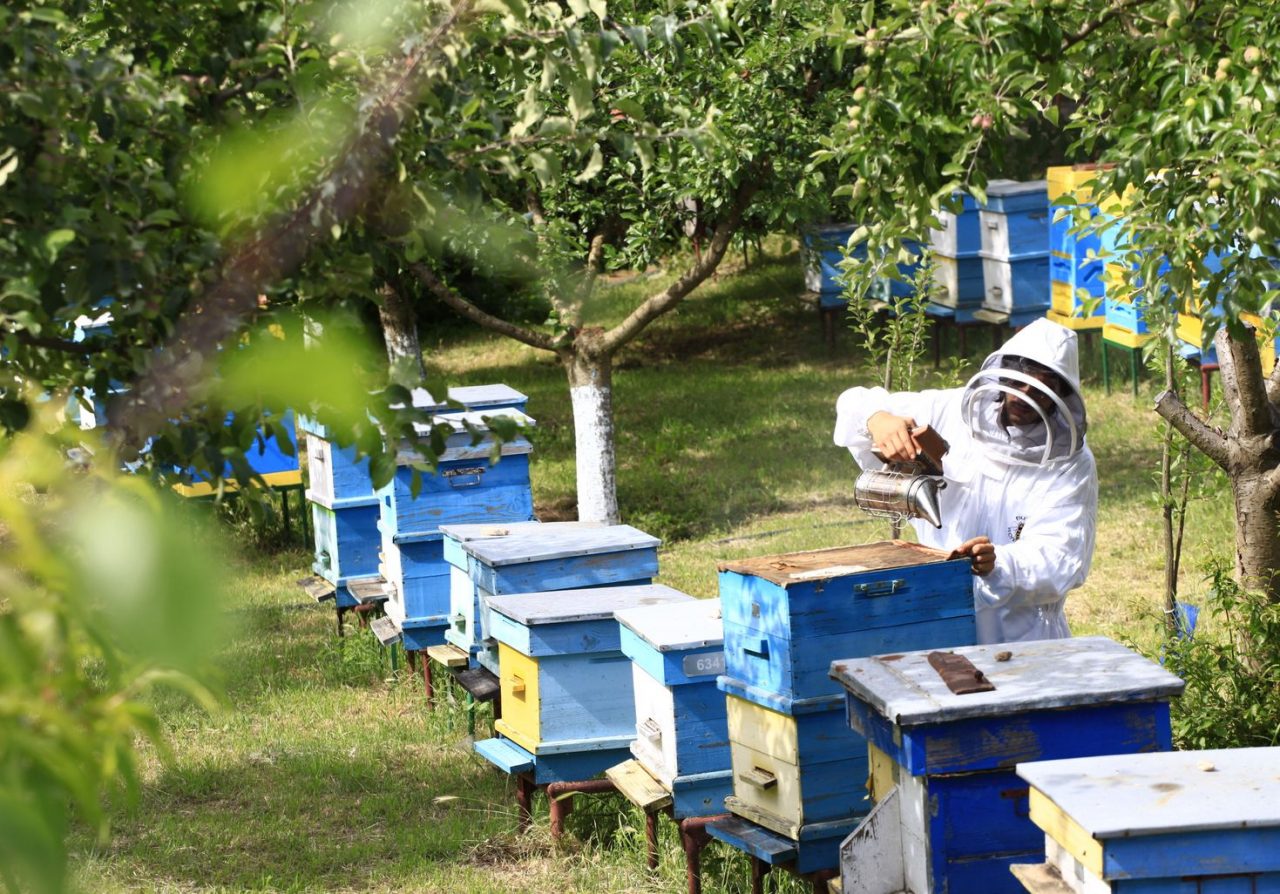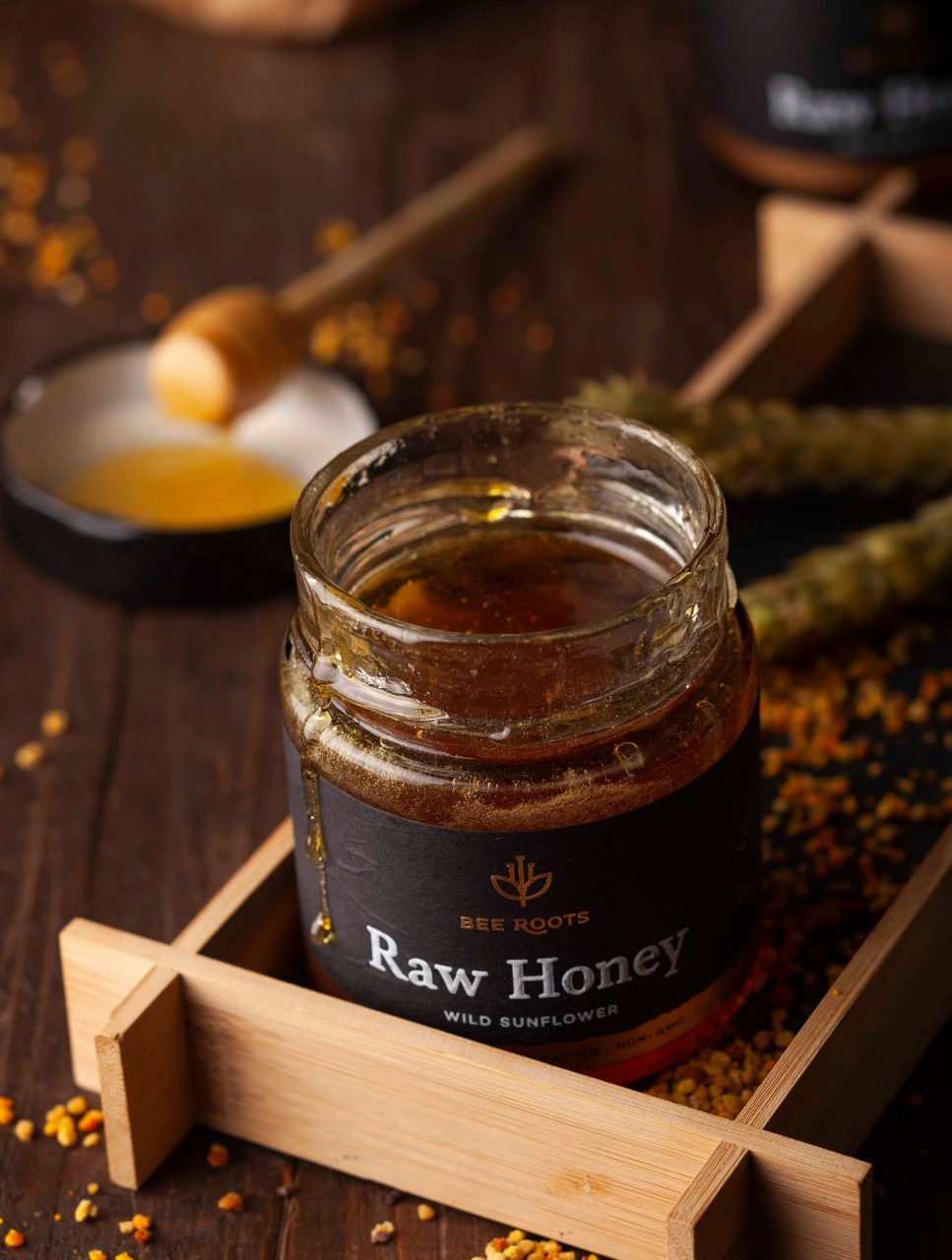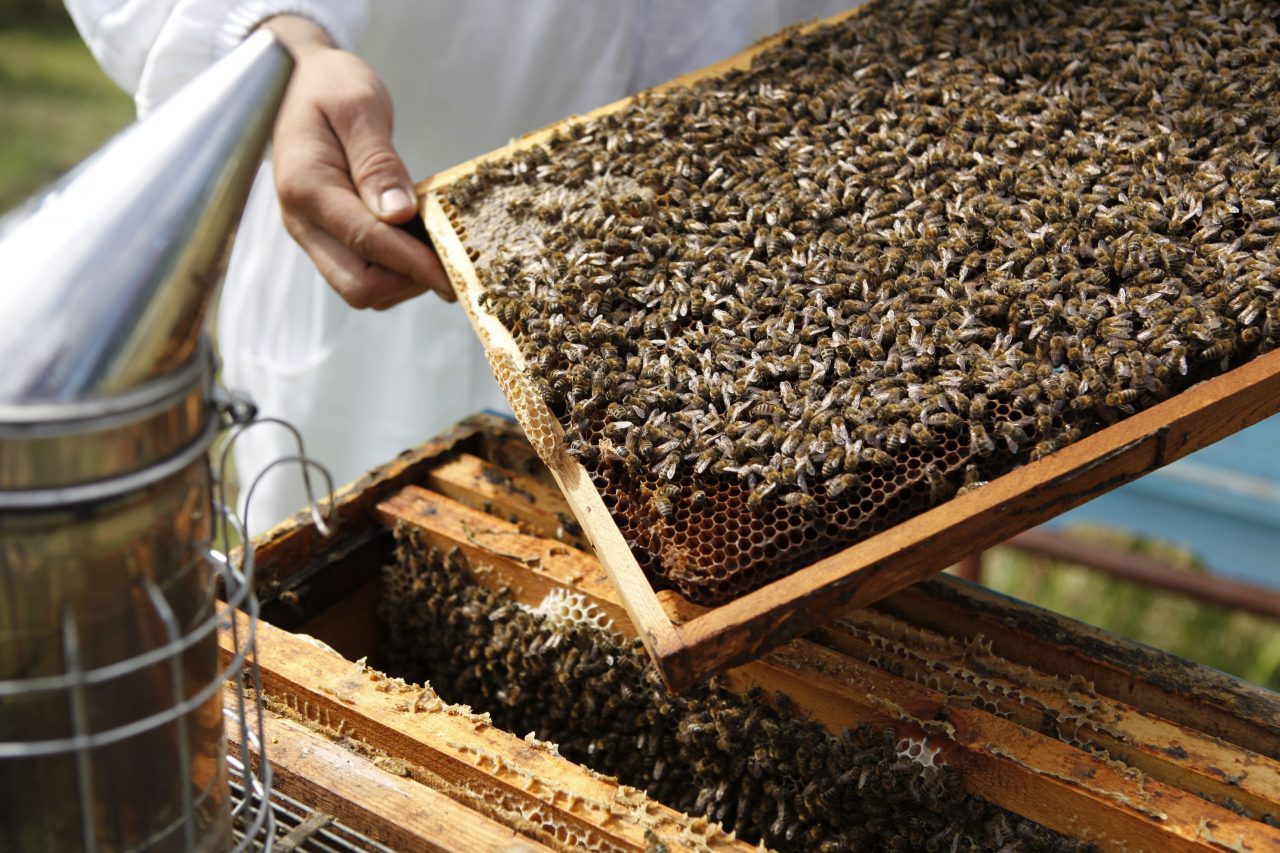How Bees Make Raw Honey: From Start to Finish

The honey bee
Bees are mysterious, hard-working insects that make much of our current reality possible. The first bees and wasp-like insects are estimated to have lived 130 million years ago. Since then, they have adapted and persisted through many changes on earth. There are over 20,000 bee species in the world; 4,000 of them are native to the United States. They range from the tiny (2 mm) and solitary perdita minima (known as the world’s smallest bee) to cherry tomato sized species of carpenter bees.
Not only do bees make food agriculture possible, and support the biodiversity of many ecosystems, they are also famously known for producing a decadent, golden syrup: honey. One of the oldest records of honey dates back to 2100 B.C. where it was mentioned in Sumerian and Babylonian cuneiform writings, the Hittite code, and the sacred writings of India and Egypt. Its name comes from the English hunig, and it was the first and most widespread sweetener used by humans.
Once reserved only for royalty, honey is now widely available and used around the world for a variety of purposes. Here is a breakdown of how honey is made, from start to finish!

How do bees make honey?
Making honey is hard work. Every bee in a colony has a job to do to make sure the entire process runs smoothly. Gatherer bees leave the hive each day in search of food sources that can be utilized to make honey back at the hives. These bees are in search of rich-coloured flowers and nectar-producing flora.
All bees feed more or less exclusively on nectar and pollen. These are the byproducts of flowers and other vegetation. Pollen is a common cause of allergies in humans. These gatherer bees spend the entire day gathering these byproducts. One bee can carry a payload of nectar or pollen close to their own weight. To put this into perspective, a typical airplane can only fly with a load one-quarter of its weight.
Bees will only return to the hive when they have collected enough pollen and nectar to pass on to other bees in the hive. The magic happens when the gatherer bees pass their harvest one to other bees in the hive. The bees vibrate their wings to reduce the water content of the nectar until it is reduced from 70% to 20%. This process stimulates a change in the nectar from a liquid state to a denser, syrupy state. Sometimes the nectar is stored at once in cells in the honeycomb before this process occurs if there are any temperature excursions that are abnormal in the hive.
This is the exact process that creates honey! Colony bees will place the honey in various honeycombs inside the hive. These are the geometric shapes you will see if you remove a section of a hive. These act as small storage chambers for the honey. It is placed inside these storage cells and capped with beeswax in readiness for the arrival of newborn baby bees.

This cycle is done to ensure the health efficiency of newborn bees, but also to sustain the energy of other bees in the hive. Bees will eat their own honey, especially in uncertain times, like seasonal changes, when food sources may not be as plentiful.
Excess pollen is mixed with nectar to feed larvae as well, as it is an excellent source of protein for bees. Before returning to the flower again for more pollen, bees will clean themselves carefully to remove any excess pollen. This is done so they can fly more efficiently and collect fresh pollen and nectar on the next trip.
At just three weeks old, gatherer bees leave the hive to start browsing flower patches and contribute to the hive. Sadly, these bees only live for roughly six weeks after leaving the hive, with much work to do and a limited amount of time to complete it. It takes 300 bees about three weeks to gather 450g of honey. On average, a hive contains 40,000 bees!
As humans enjoy honey, it is important and interesting to understand the process of how it is made. Honey harvested sustainably is always a better alternative to store-bought industrialized honey producers, which offer little protection for their bee colonies, and follow little regulations.
In summary, enjoy your honey, but don’t forget the work it takes by thousands of little bees to make it all possible.
